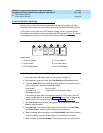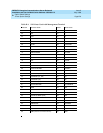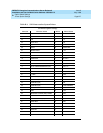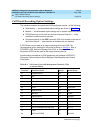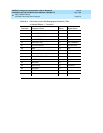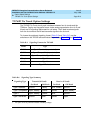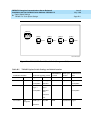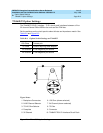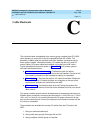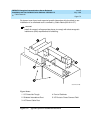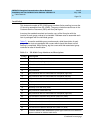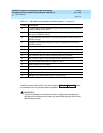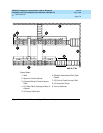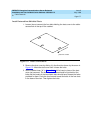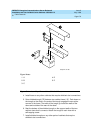
Cable Ductwork
Page C-1
C
DEFINITY Enterprise Communications Server Release 6
Installation and Test for Multi-Carrier Cabinets
555-230-112
Issue 5
May 1998
C
C
Cable Ductwork
The cable ductwork is assembled from various group numbers from ED-1E465
(facia paneling to cover the I/O ducts is assembled from ED-1E464). The
assembly, installed after the cabinets have been installed, provides ducts for
three types of cables: intercabinet cables, I/O cables (tip and ring), and AC
power cables. DC power cables are installed in ductwork per local codes.
Typical assembled ductwork is shown in Figure C-1
. The 3 primary types of
ductwork are detailed below:
■ Shielded intercabinet cable duct — Provides the path for cables
connected between cabinets. This duct is the first installed. Covers for this
duct should be stored until the intercabinet cabling is completed.
■ I/O cable duct — Provides the path for I/O cables to the Main Distribution
Frame (MDF). The I/O cables originate at connectors on the rear of the
cabinets and terminate on connectors at the MDF.
■ AC power duct — Provides the path for the AC wiring that powers the
system. This duct mounts to the rear of the shielded duct that runs across
each cabinet.
Five group numbers provide various arrangements of receptacles necessary for
different types of cabinets. Knockouts are provided for 1-inch (2.54 cm), 1.5-inch
(3.81 cm), or 2-inch (5 cm) conduits that provide AC power connection at one
end of each cabinet lineup. Covers for the power duct should be stored until the
AC wiring is completed.
Three methods are available for running I/O cables from the I/O ducts to the
MDF:
1. Using an overhead cable rack
2. Using cable duct groups 22 through 26, and 39
3. Using multiples of either group as required



